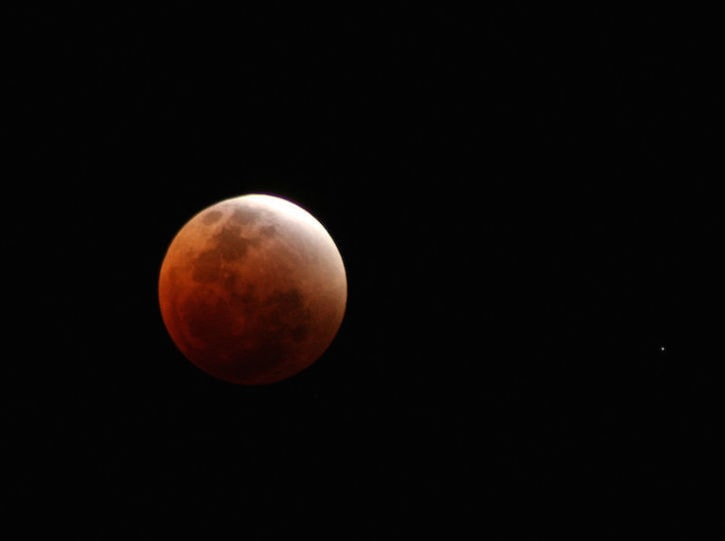Canadians of all coasts will get a glimpse at tonight's (or tomorrow morning's) lunar eclipse, scheduled to peak at 12:45 a.m. PST.
Tonight's eclipse is known as a blood-red moon eclipse, a rarer eclipse, when our view of the Moon is completely covered by the Earth's shadow.
"The appearance is caused by the light from the Sun being refracted by Earth's atmosphere, similar to what happens at sunrise or sunset," reads the description from the H.R. MacMillan Space Centre, located in Vancouver's Vanier Park.
"People may refer to this type of lunar eclipse as a "blood moon" because of its red hue."
(The MacMillan centre is holding an evening program tonight in its planetarium, beginning at 8:45 p.m. The eclipse begins at 9:55 p.m., with the full eclipse beginning at 12:08 a.m. tomorrow morning. The centre says the eclipse will end at 3:36 a.m.)
"Some people like to say it's sort of a blood-red moon," said Colin Haig of the Royal Astronomical Society of Canada, to the CBC, "which has great emotional impact but it's not really blood colour – it's more of a coppery colour."
Several lunar eclipses happen every year, although they can only be viewed by certain places on Earth, and the Earth's shadow – which causes the Moon's eclipse, blocking the Sun – sometime sonly touches part of the Moon.
Tonight's eclipse kicks off a four-part eclipse series known as a lunar tetrad, says the Space Centre.
"It means it is one of four successive total lunar eclipses in a row without a partial eclipse in between, each of which is separated by six full moons."
The next eclipses will be: October 8, 2014; April 4, 2015; and September 28, 2015.
Also occurring tonight (and throughout April) is the "opposition" of Mars, meaning the red planet will have its closest approach to Earth in 26 months – with the two planets only 92 million kilometres apart.
This happens ever two years, when the Earth passes between Mars and the sun.
The red planet will look 10 times brighter than it normally does from Earth, according to NASA (CBC).



